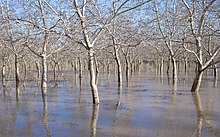
The almond is a species of small tree from the genus Prunus, cultivated worldwide for its seed, a culinary nut. Along with the peach, it is classified in the subgenus Amygdalus, distinguished from the other subgenera by corrugations on the shell (endocarp) surrounding the seed.

Alfalfa, also called lucerne, is a perennial flowering plant in the legume family Fabaceae. It is cultivated as an important forage crop in many countries around the world. It is used for grazing, hay, and silage, as well as a green manure and cover crop. The name alfalfa is used in North America. The name lucerne is more commonly used in the United Kingdom, South Africa, Australia, and New Zealand. The plant superficially resembles clover, especially while young, when trifoliate leaves comprising round leaflets predominate. Later in maturity, leaflets are elongated. It has clusters of small purple flowers followed by fruits spiralled in two to three turns containing 10–20 seeds. Alfalfa is native to warmer temperate climates. It has been cultivated as livestock fodder since at least the era of the ancient Greeks and Romans.
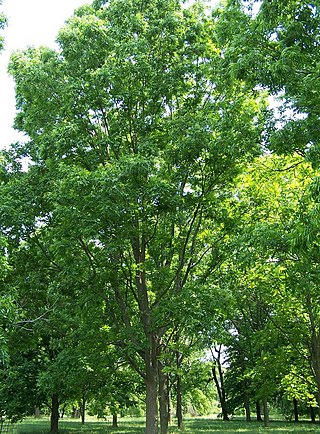
The pecan is a species of hickory native to the southern United States and northern Mexico in the region of the Mississippi River.

Blue Diamond Growers is an agricultural cooperative and marketing organization that specializes in California almonds. Founded in 1910 as the California Almond Growers' Exchange, the organization claims to be the world's largest tree nut processing and marketing company. It serves 3,500 almond growers, and helps make the almond crop California's largest food export.
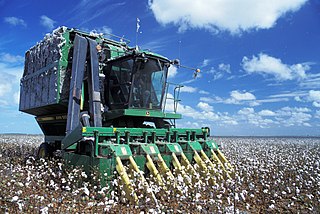
Mechanised agriculture or agricultural mechanization is the use of machinery and equipment, ranging from simple and basic hand tools to more sophisticated, motorized equipment and machinery, to perform agricultural operations. In modern times, powered machinery has replaced many farm task formerly carried out by manual labour or by working animals such as oxen, horses and mules.
The California Walnut Board or Walnut Marketing Board, founded in 1933, supports the California walnut industry. The organization was originally known as the Walnut Control Board, changing its name to the Walnut Marketing Board in 1962 and to the California Walnut Board in 2008. Its formation was authorized by the Agricultural Adjustment Act (AAA).
The University of California Citrus Experiment Station is the founding unit of the University of California, Riverside campus in Riverside, California, United States. The station contributed greatly to the cultivation of the orange and the overall agriculture industry in California. Established February 14, 1907, the station celebrated its 100th anniversary in 2007.

While the first Christmas tree farm may have appeared as early as 1901, Christmas tree production in the United States was largely limited to what could be harvested from natural forests until the 1950s. Among the important Christmas tree producing areas in the U.S. are Wisconsin, North Carolina, Pennsylvania and the Pacific Northwest. In 2002 Christmas tree production in the United States totaled 20.8 million trees and the U.S. was one of the world's leading producers of natural Christmas trees. That same year, Pennsylvania was the top producer in the United States.

Christmas tree production in Canada totals from 3 to 6 million trees annually. Trees are produced in many of the provinces of Canada but the nation's leading producers are found in Quebec, Nova Scotia and Ontario, which account for 80 percent of Canadian tree production. Of the 900,000 trees produced annually in British Columbia, most are cut from native pine stands.
The California Avocado Commission is an agricultural marketing organization and trade association serving avocado producers in the American state of California.

The economy of the state of Florida is the fourth-largest in the United States, with a $1.4 trillion gross state product (GSP) as of 2022. If Florida were a sovereign nation (2022), it would rank as the world's 16th-largest economy according to the International Monetary Fund, ahead of Indonesia and behind Mexico. Agriculture, tourism, industry, construction, international banking, biomedical and life sciences, healthcare research, simulation training, aerospace and defense, and commercial space travel contribute to the state's economy.

A walnut is the edible seed of any tree of the genus Juglans, particularly the Persian or English walnut, Juglans regia. They are accessory fruit because the outer covering of the fruit is technically an involucre and thus not morphologically part of the carpel; this means it cannot be a drupe but is instead a drupe-like nut.

Felix Gillet was a California pioneer nurseryman, horticulturist, sericulturist, and writer who made several important introductions of superior European deciduous fruit and nut trees to California and the northwestern United States. Beginning in 1869, in his Barren Hill Nursery in Nevada City, Gillet cultivated his own imported scion wood and home-grown nursery stock, experimented with grafting and hybridizing, and continually wrote articles on horticulture and his plant selections, while remaining active in Nevada City civic affairs. Publishing his own nursery catalog for 37 years and advertising widely, he sold his walnuts, filberts (hazelnuts), chestnuts, prunes, figs, strawberries, grapes, peaches, cherries, citrus and dozens of other fruit and nut varieties throughout California and the Pacific Northwest. The commercial walnut variety "Felix Gillet" was named in his honor.
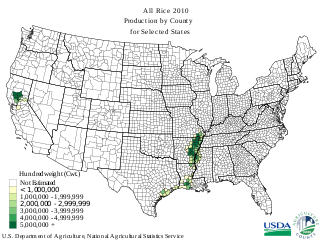
Rice production is the fourth largest among cereals in the United States, after corn, wheat, and sorghum. Of the country's row crop farms, rice farms are the most capital-intensive, and have the highest national land rental rate average. In the US, all rice acreage requires irrigation. In 2000-09 approximately 3.1 million acres in the US were under rice production; an increase was expected over the next decade to approximately 3.3 million acres. USA Rice represents rice producers in the six largest rice-producing states of Arkansas, California, Louisiana, Mississippi, Missouri, and Texas.

Avocado production is important to the economy of Mexico with the country being the world's largest producer of the crop. Mexico supplies 45 percent of the international avocado market. Of the 57 avocado producing countries, the other major producers are Dominican Republic, Peru, Colombia, and Indonesia, in that order.
Limoneira is a public limited agribusiness and real estate development company based in Santa Paula, California, United States. The Company's operations mainly consist of production, sales and marketing of citrus and avocados. The company's real estate holdings and vast water rights support three business segments which are agribusiness, rental operations and real estate development. The company received the IPM Innovator Award at California Legislature Assembly Resolution.
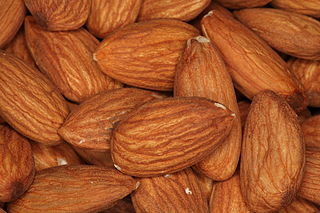
Agriculture is a significant sector in California's economy, producing nearly US$50 billion in revenue in 2018. There are more than 400 commodity crops grown across California, including a significant portion of all fruits, vegetables, and nuts in the United States. In 2017, there were 77,100 unique farms and ranches in the state, operating across 25.3 million acres of land. The average farm size was 328 acres (133 ha), significantly less than the average farm size in the U.S. of 444 acres (180 ha).

California produces 80% of the world's almonds and 100% of the United States commercial supply. Although almonds are not native to California, a hot, dry Mediterranean climate and developed water infrastructure create favorable conditions for commercial cultivation of the crop. In 2020, there were 1.25 million acres (5,100 km2) devoted to almond farming in California, producing 2.8 billion pounds (1.3 Mt).
The sugar industry of the United States produces sugarcane and sugar beets, operates sugar refineries, and produces and markets refined sugars, sugar-sweetened goods, and other products. The United States is among the world's largest sugar producers. Unlike most other sugar producing countries, the United States has both large and well-developed sugarcane and sugar beet industries. Refined sugarcane, processed sugar beet, and high-fructose corn syrup are all commonly used in the U.S. as added sugars to sweeten food and beverages.

Rice production in Texas began in 1853 in southeast Texas. By 1903, the acres of cultivated rice in Texas was second only to Louisiana and together accounted for 99 percent of rice production in United States. While other states have surpassed Texas in rice production, it remains a significant Texas crop into the foreseeable future.







